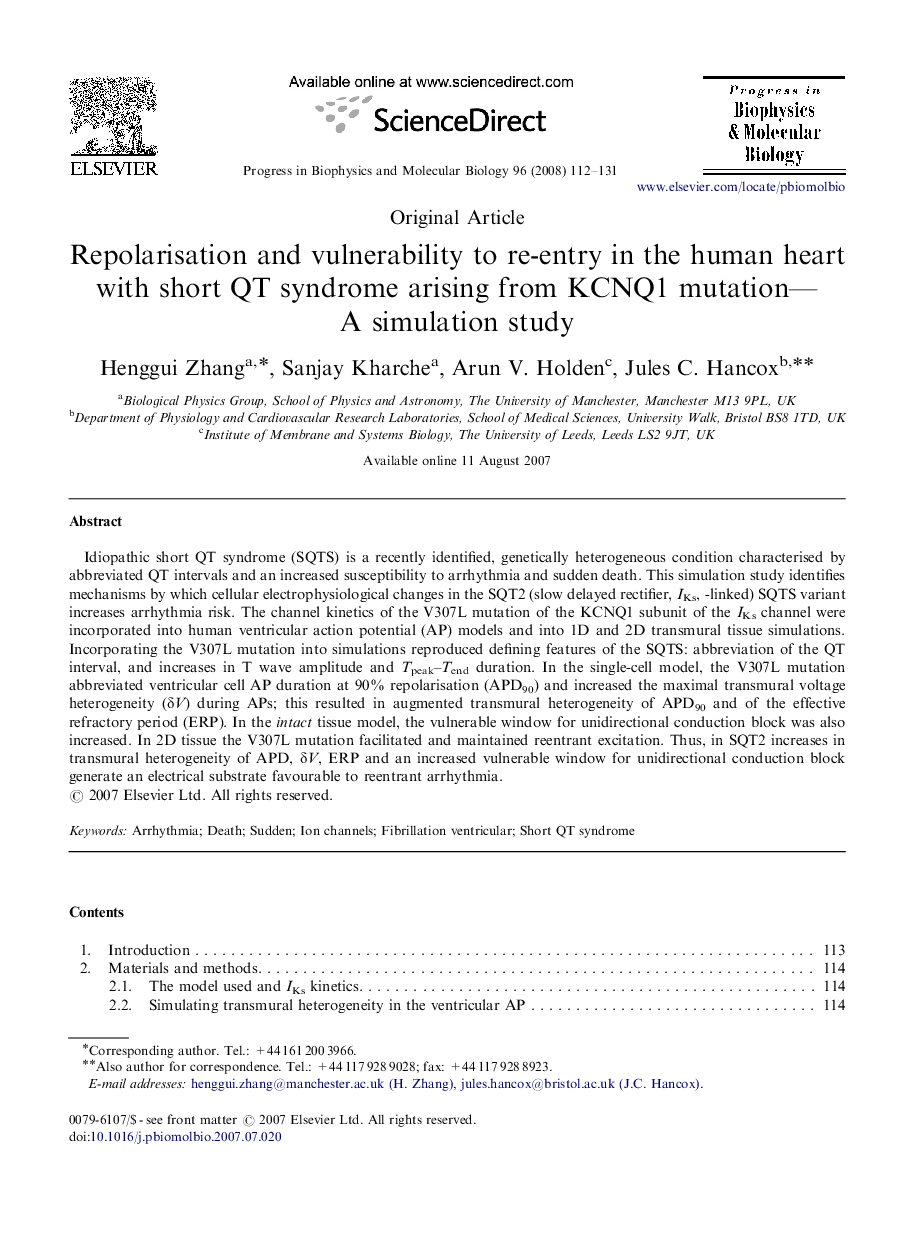| کد مقاله | کد نشریه | سال انتشار | مقاله انگلیسی | نسخه تمام متن |
|---|---|---|---|---|
| 2070410 | 1645468 | 2008 | 20 صفحه PDF | دانلود رایگان |

Idiopathic short QT syndrome (SQTS) is a recently identified, genetically heterogeneous condition characterised by abbreviated QT intervals and an increased susceptibility to arrhythmia and sudden death. This simulation study identifies mechanisms by which cellular electrophysiological changes in the SQT2 (slow delayed rectifier, IKs, -linked) SQTS variant increases arrhythmia risk. The channel kinetics of the V307L mutation of the KCNQ1 subunit of the IKs channel were incorporated into human ventricular action potential (AP) models and into 1D and 2D transmural tissue simulations. Incorporating the V307L mutation into simulations reproduced defining features of the SQTS: abbreviation of the QT interval, and increases in T wave amplitude and Tpeak–Tend duration. In the single-cell model, the V307L mutation abbreviated ventricular cell AP duration at 90% repolarisation (APD90) and increased the maximal transmural voltage heterogeneity (δV) during APs; this resulted in augmented transmural heterogeneity of APD90 and of the effective refractory period (ERP). In the intact tissue model, the vulnerable window for unidirectional conduction block was also increased. In 2D tissue the V307L mutation facilitated and maintained reentrant excitation. Thus, in SQT2 increases in transmural heterogeneity of APD, δV, ERP and an increased vulnerable window for unidirectional conduction block generate an electrical substrate favourable to reentrant arrhythmia.
Journal: Progress in Biophysics and Molecular Biology - Volume 96, Issues 1–3, January–April 2008, Pages 112–131